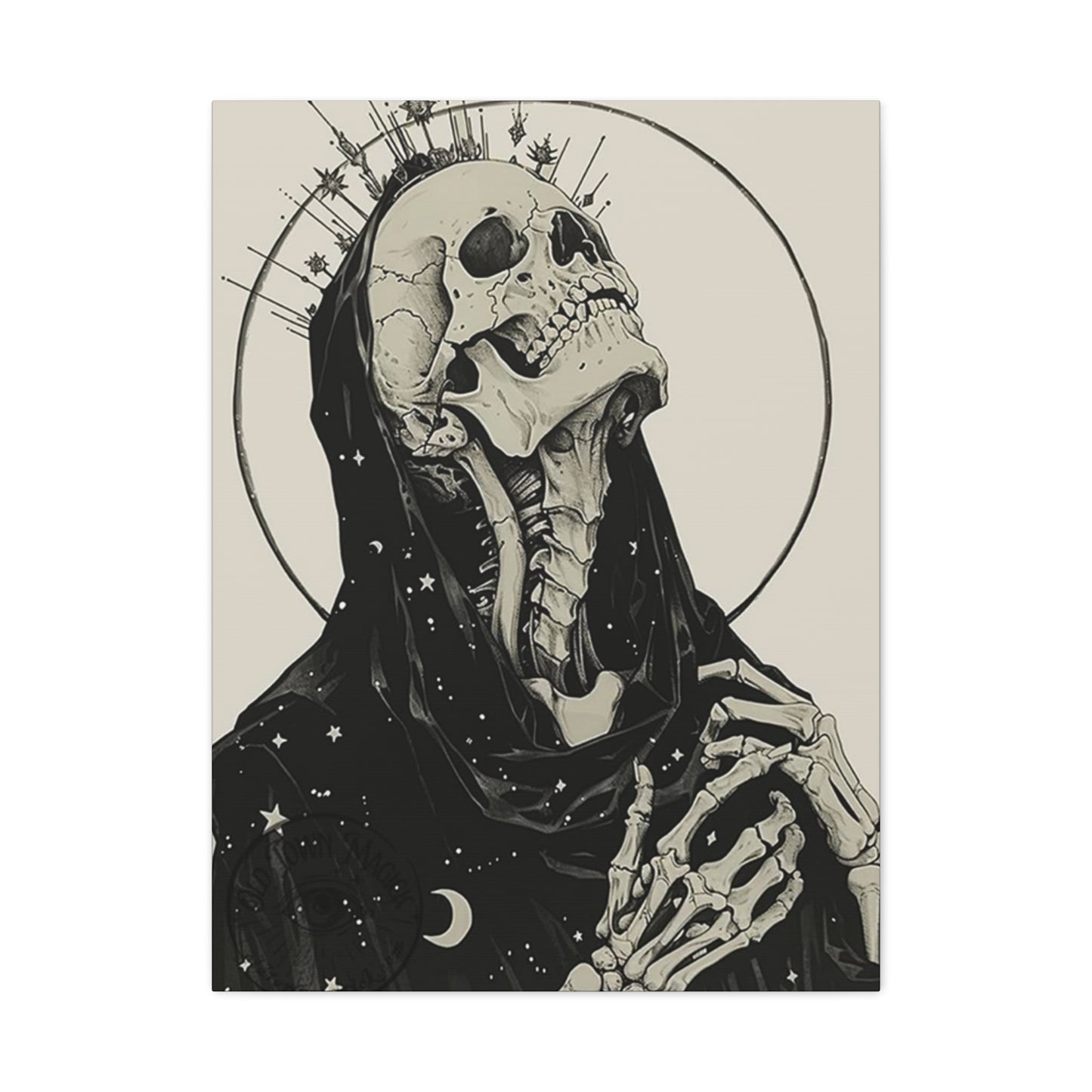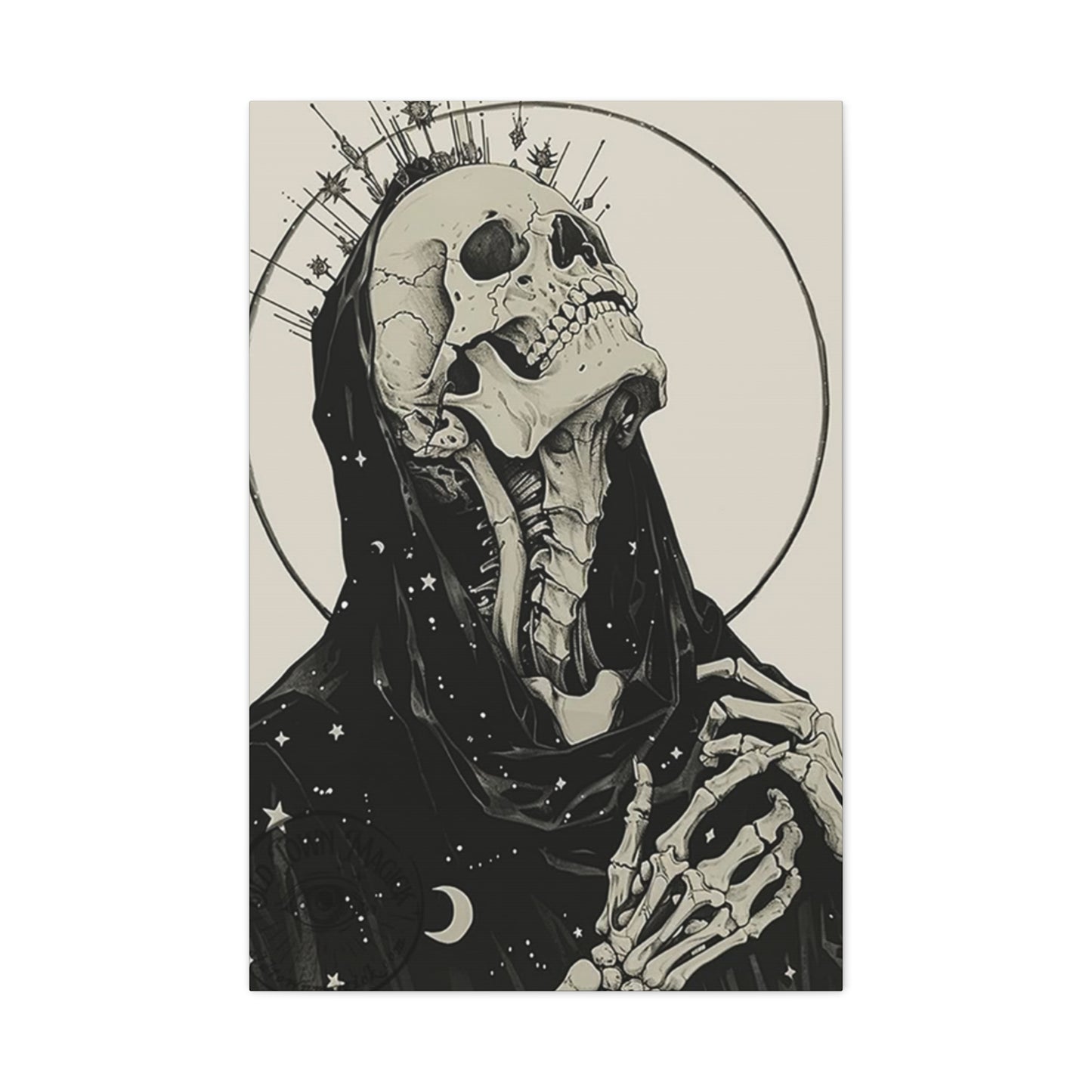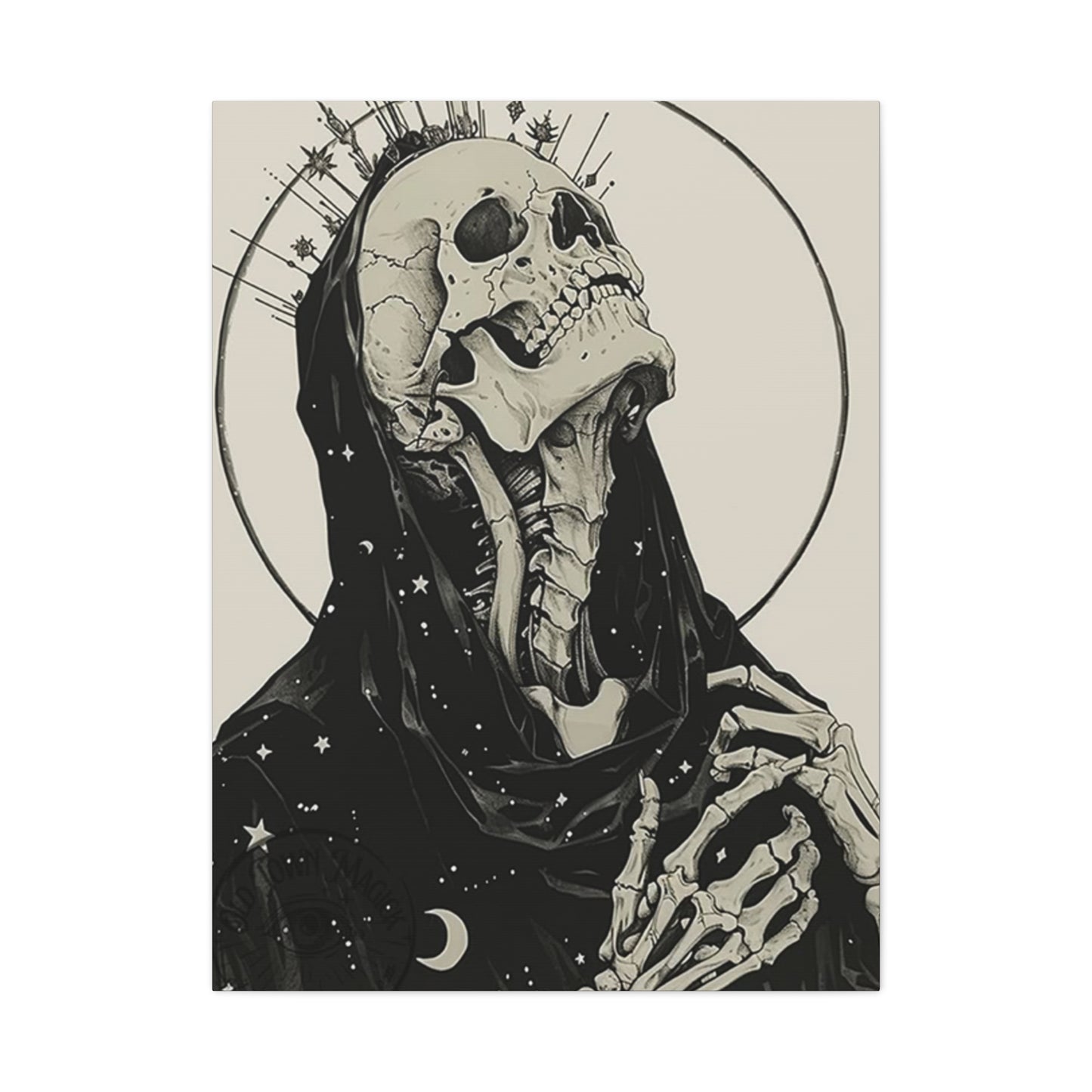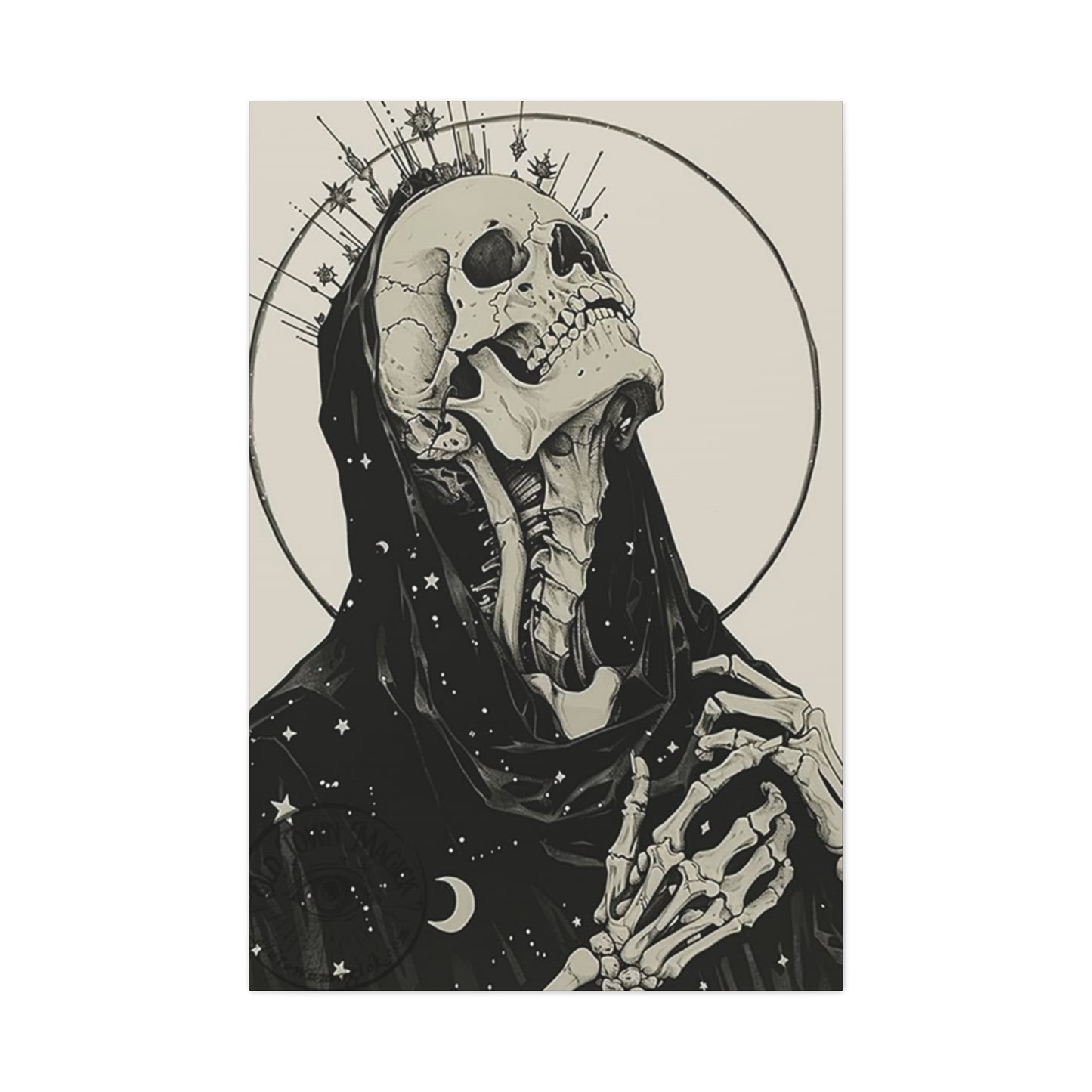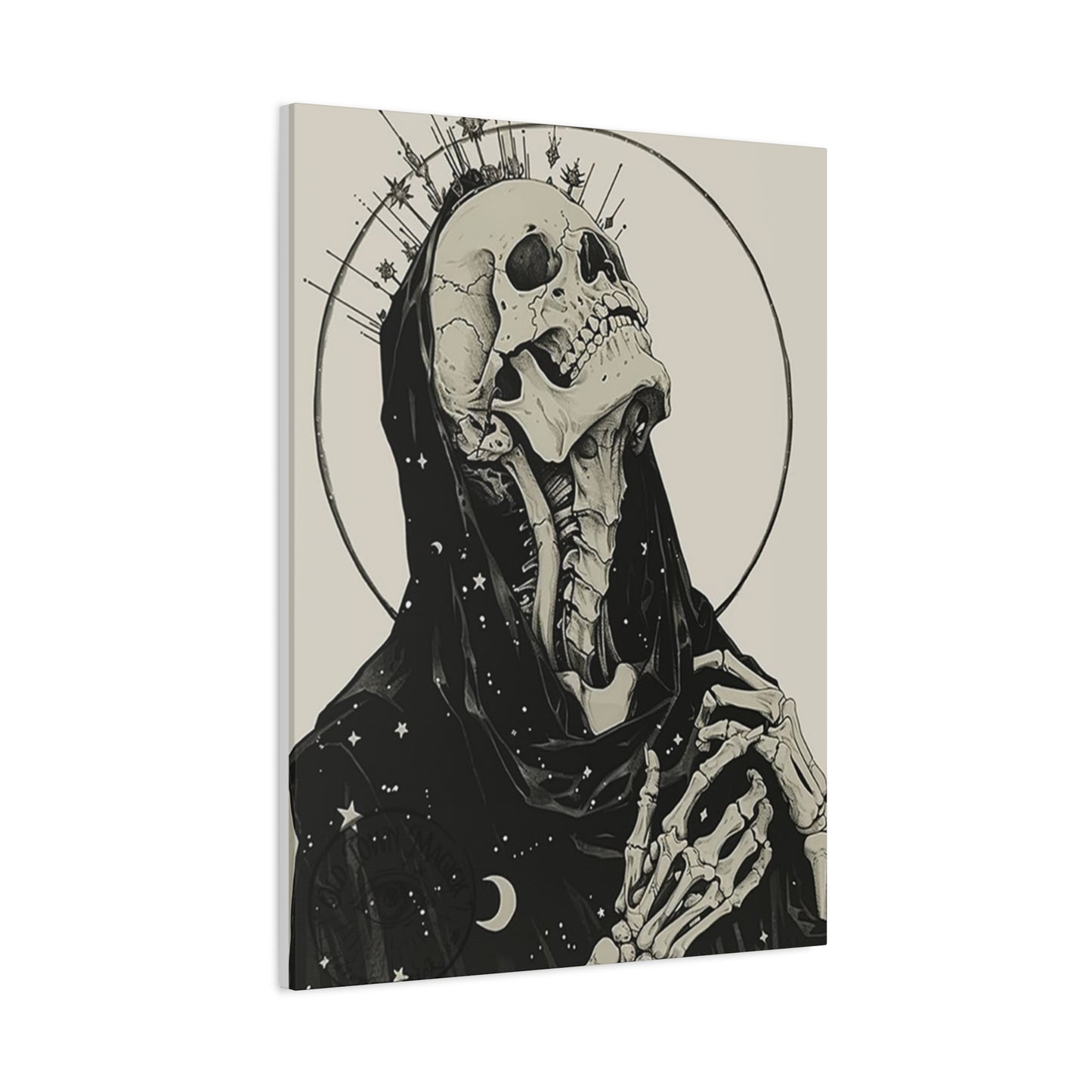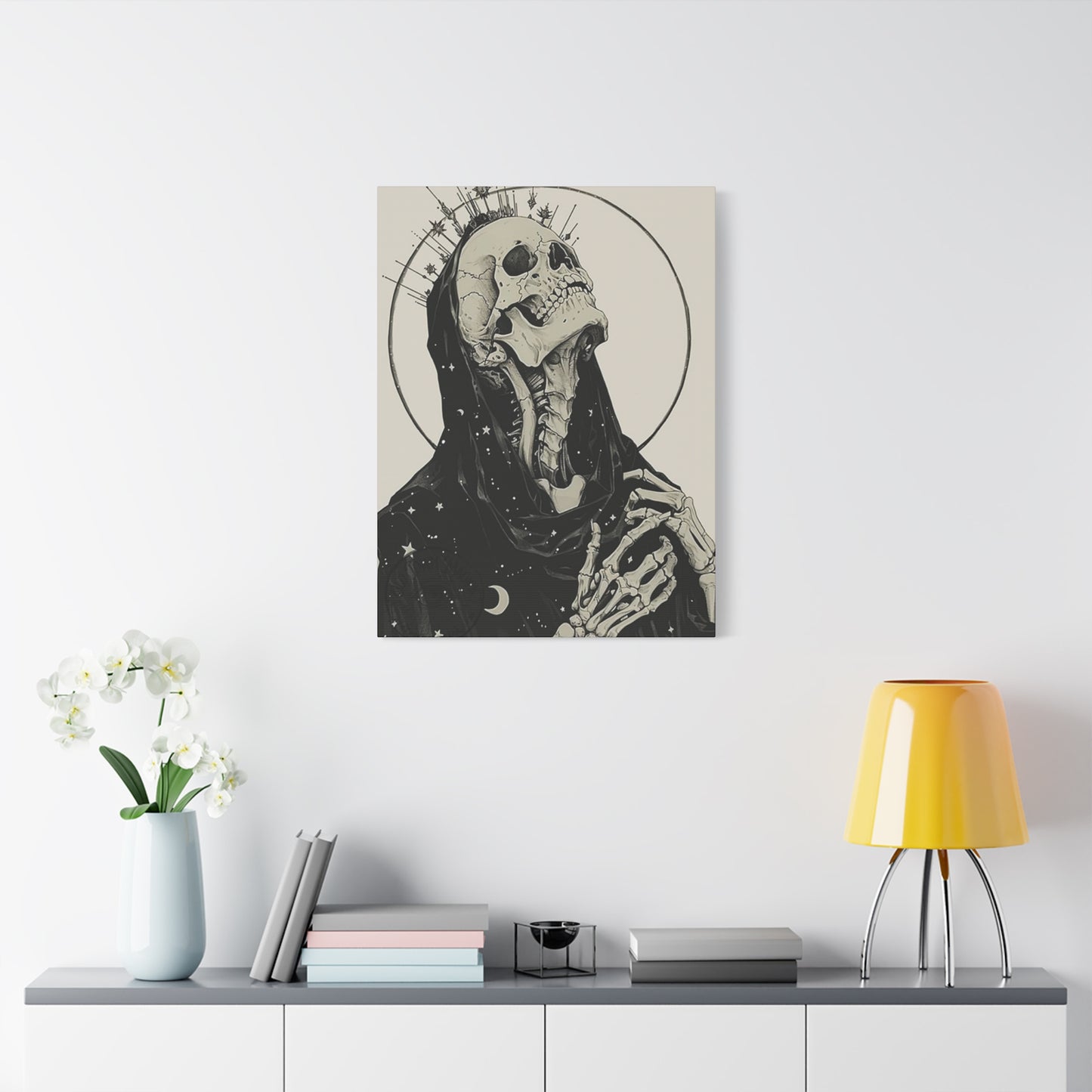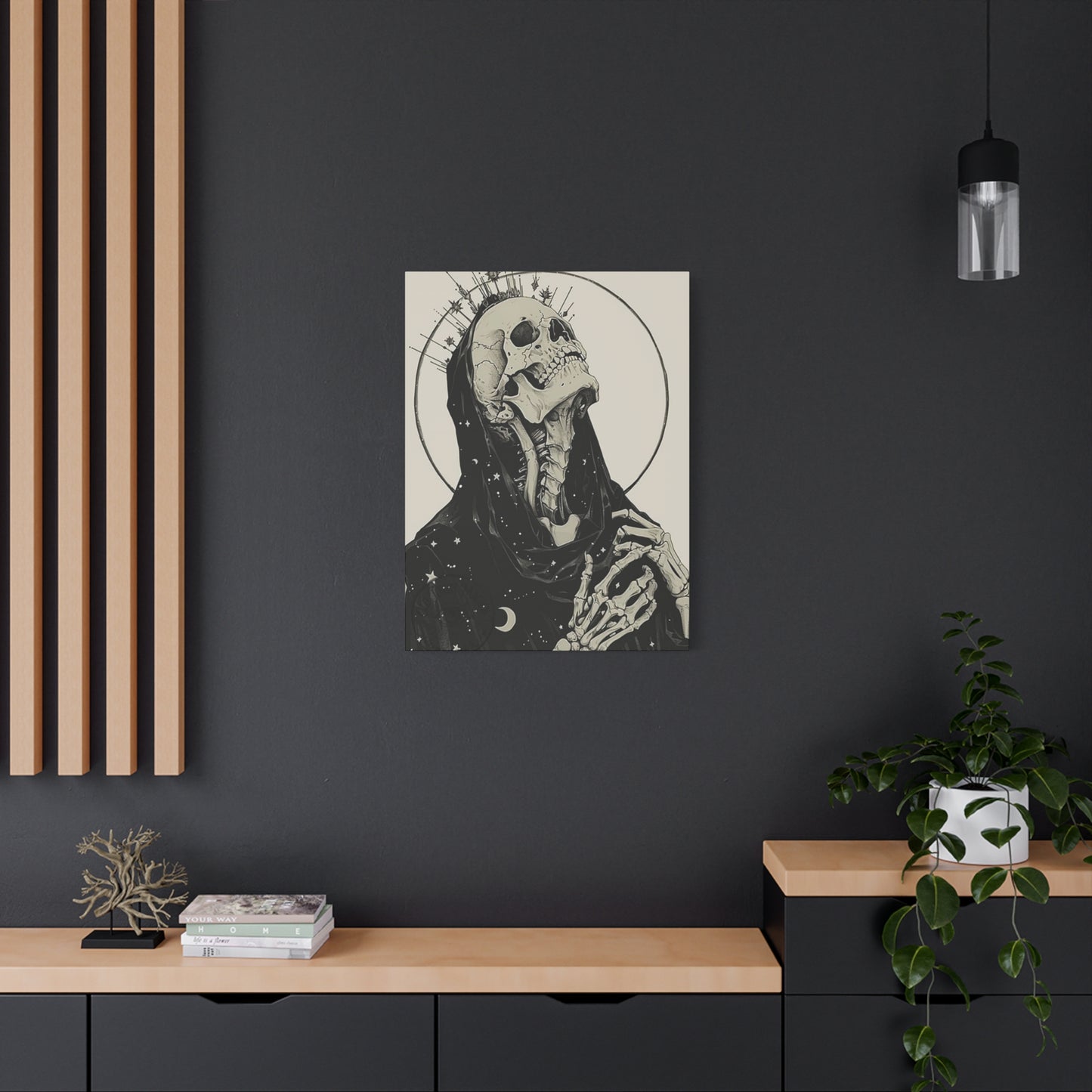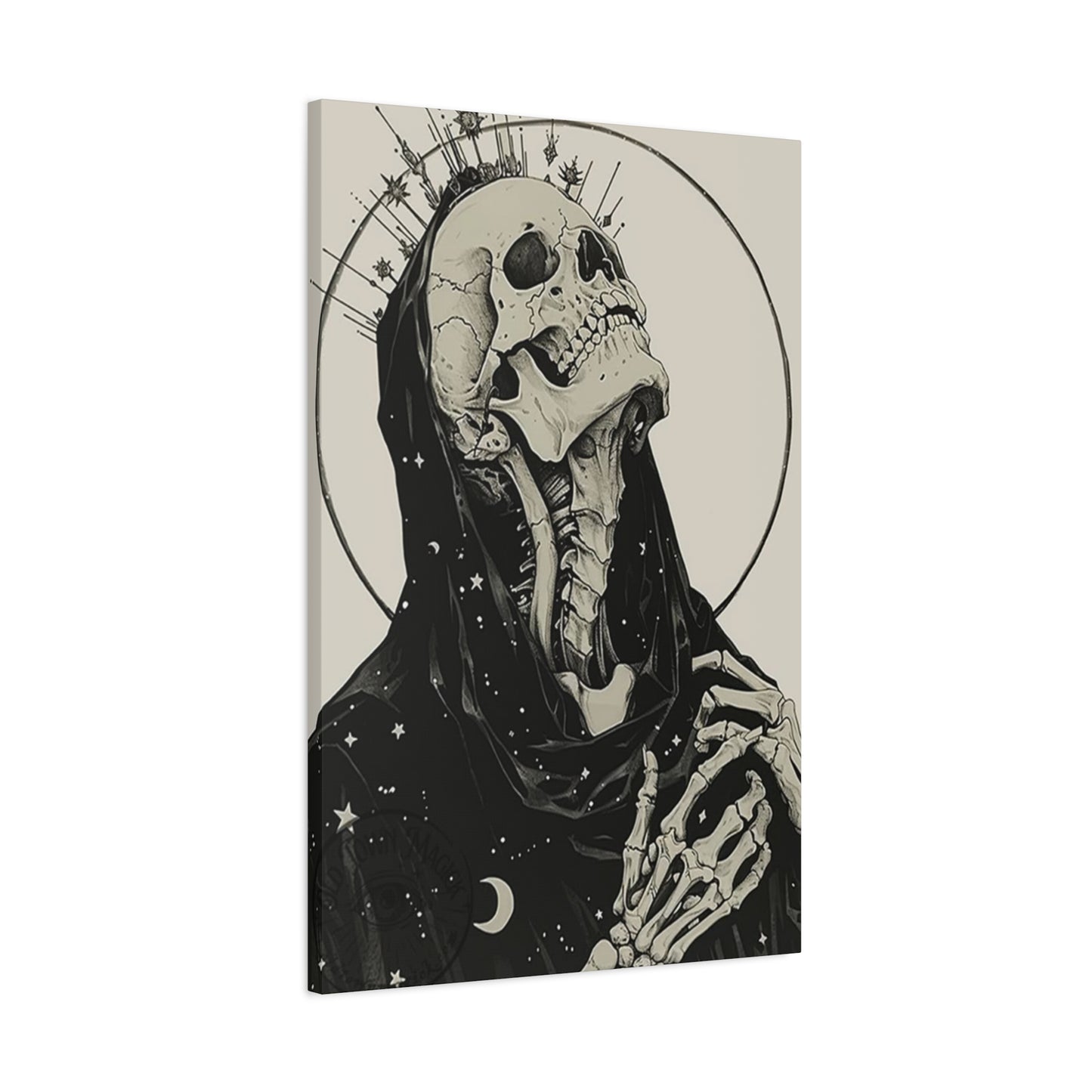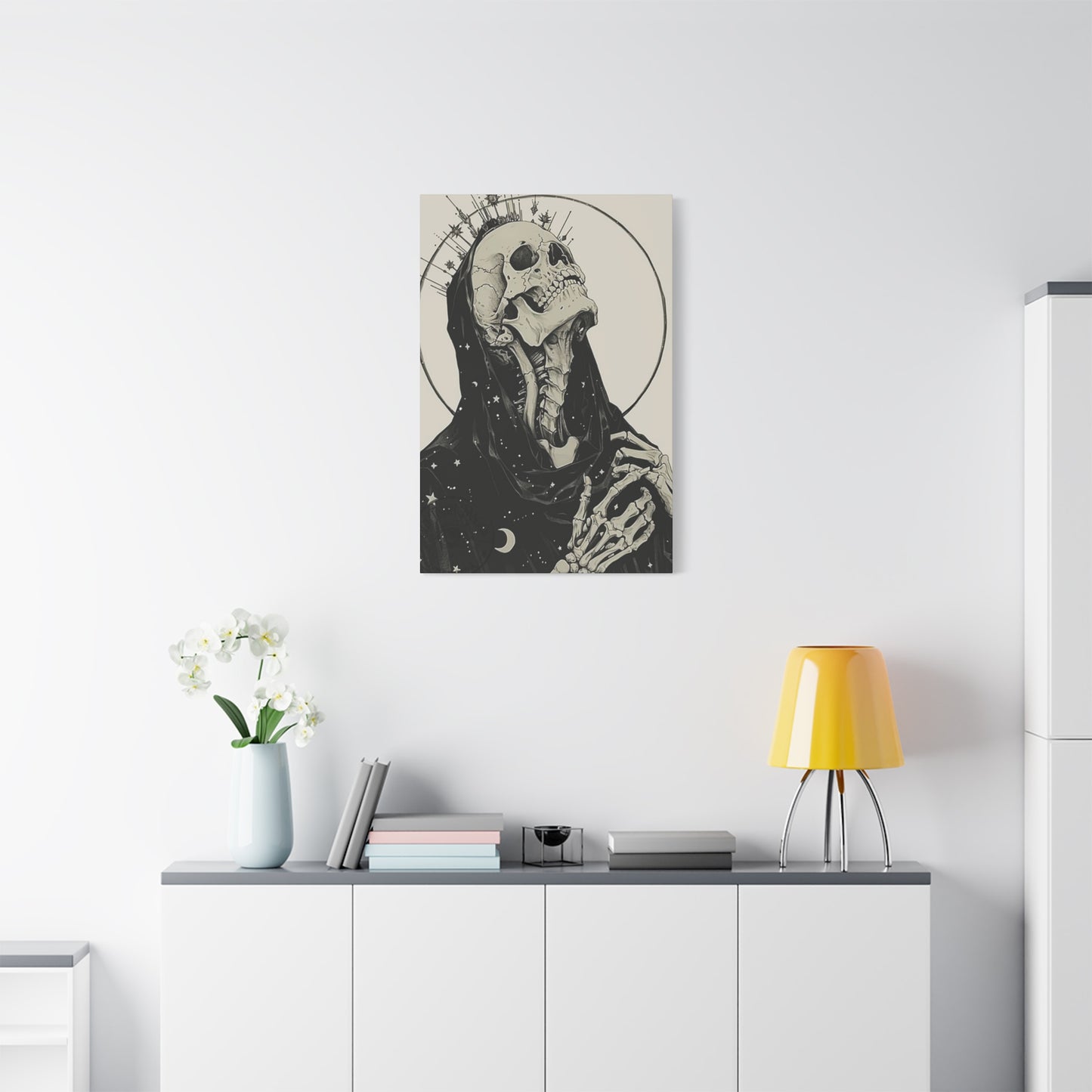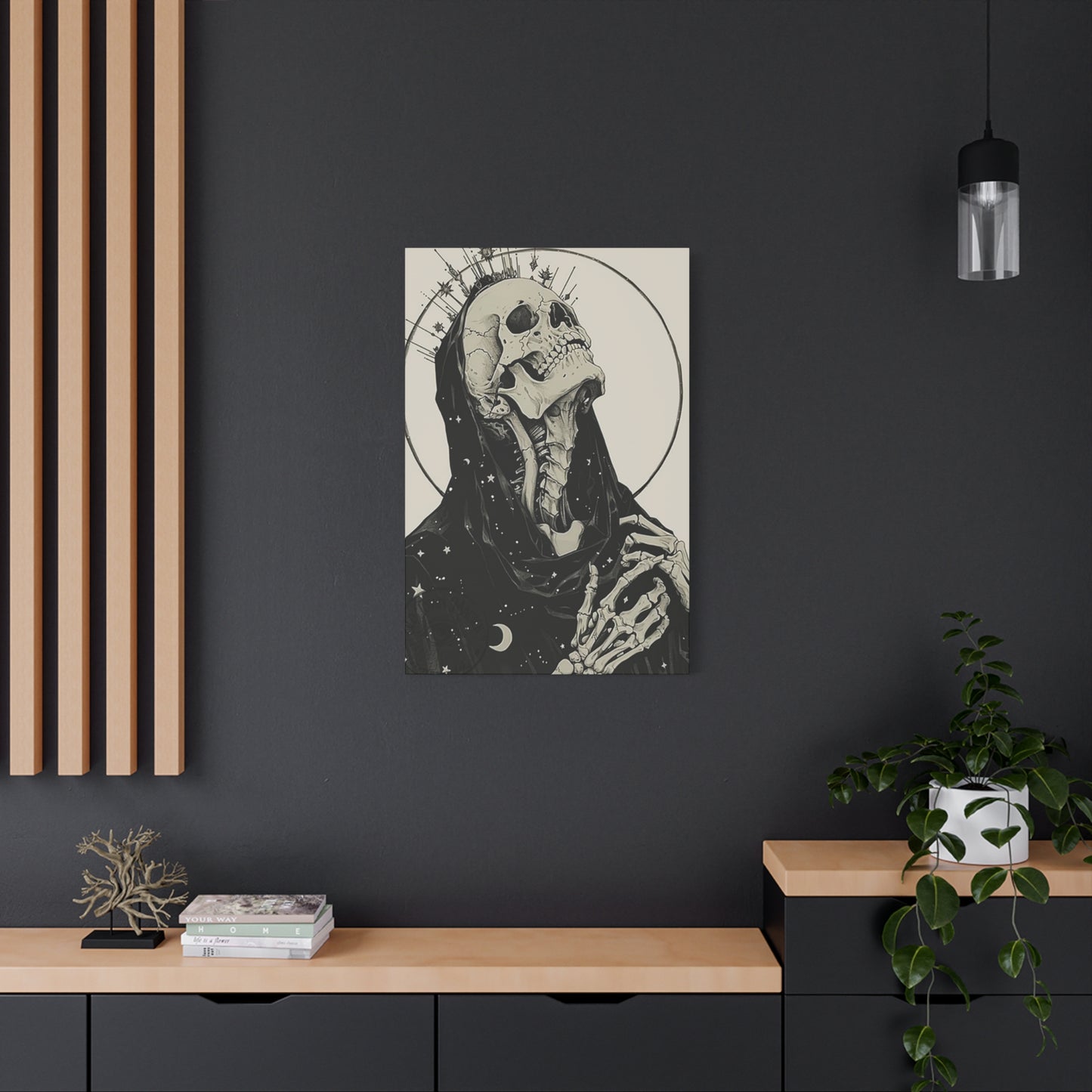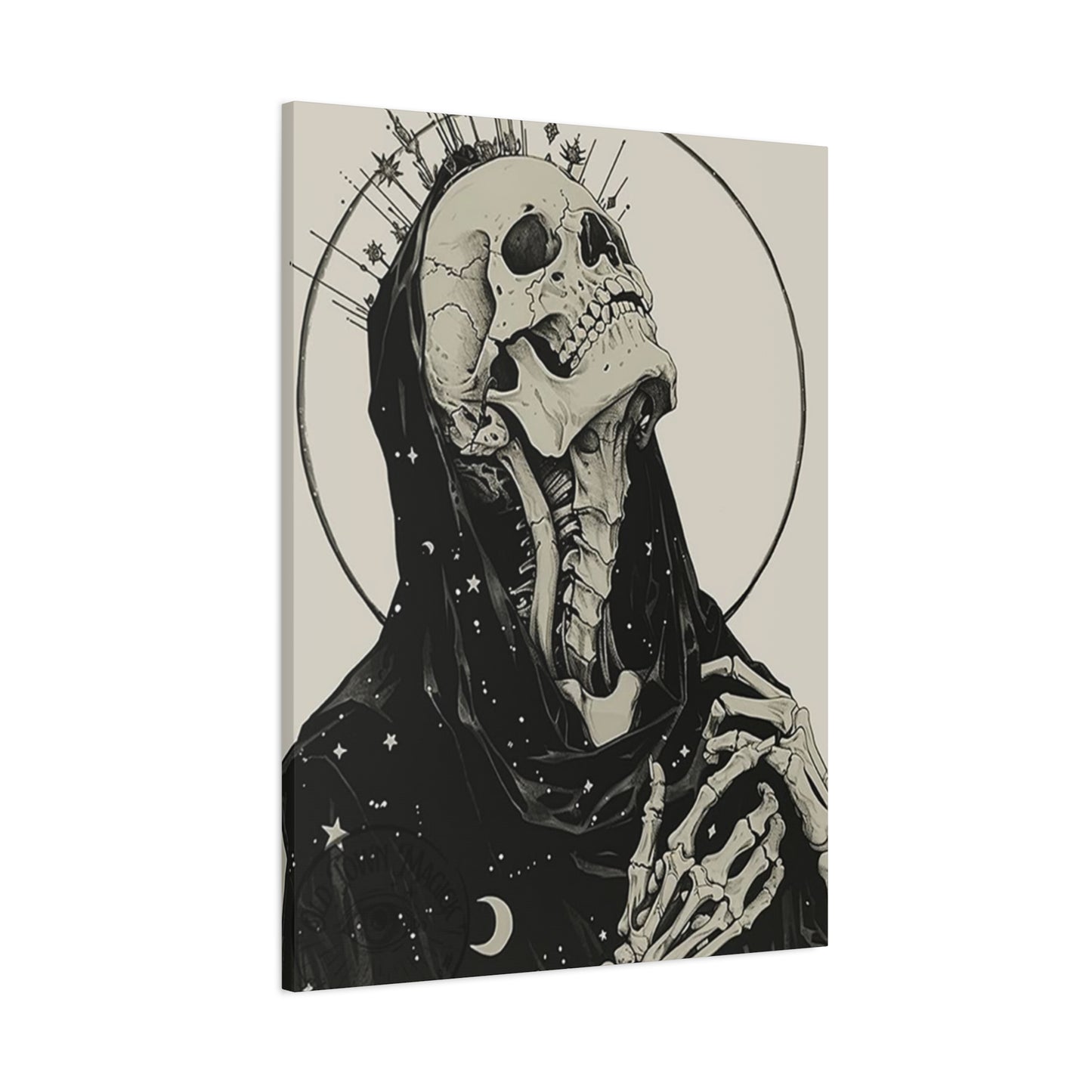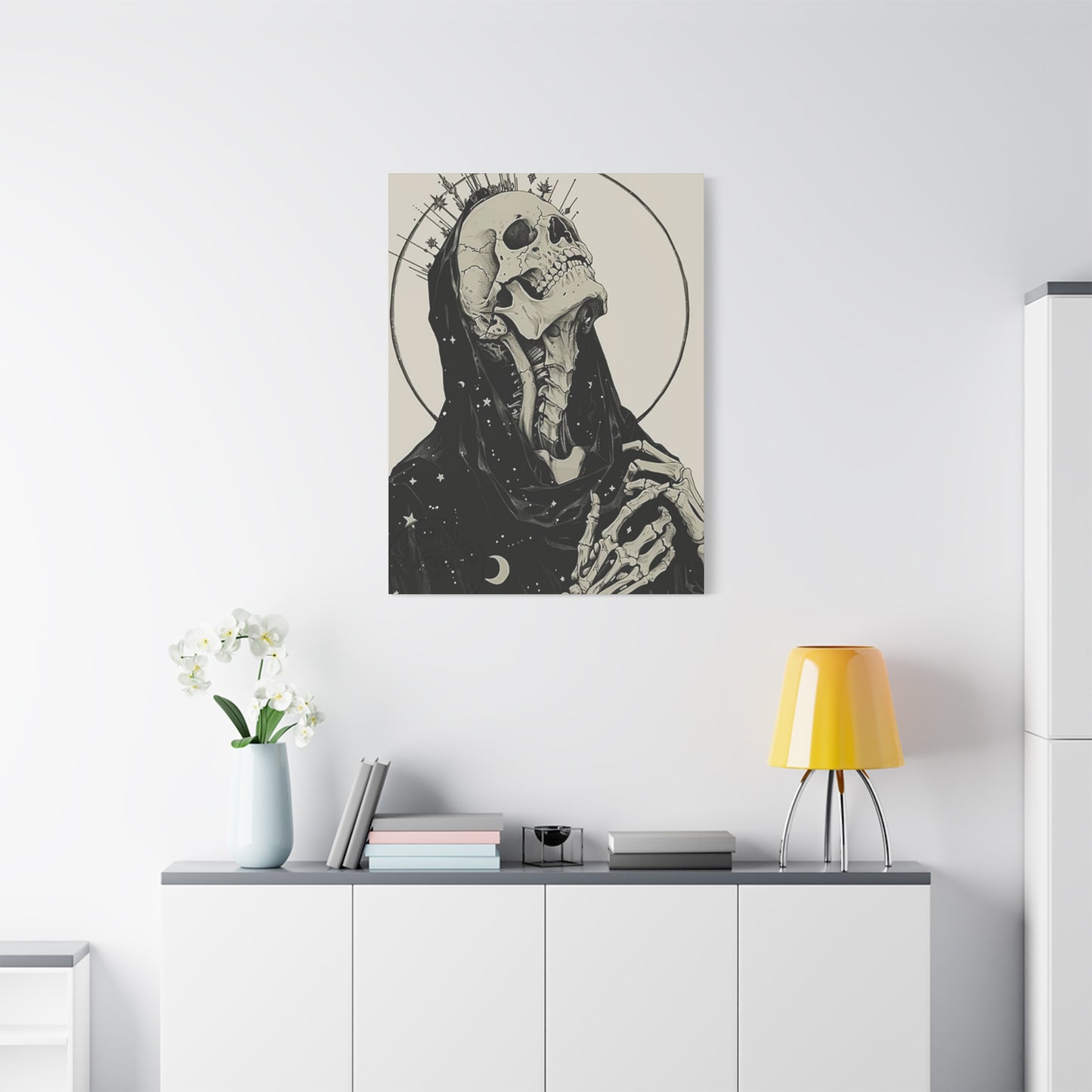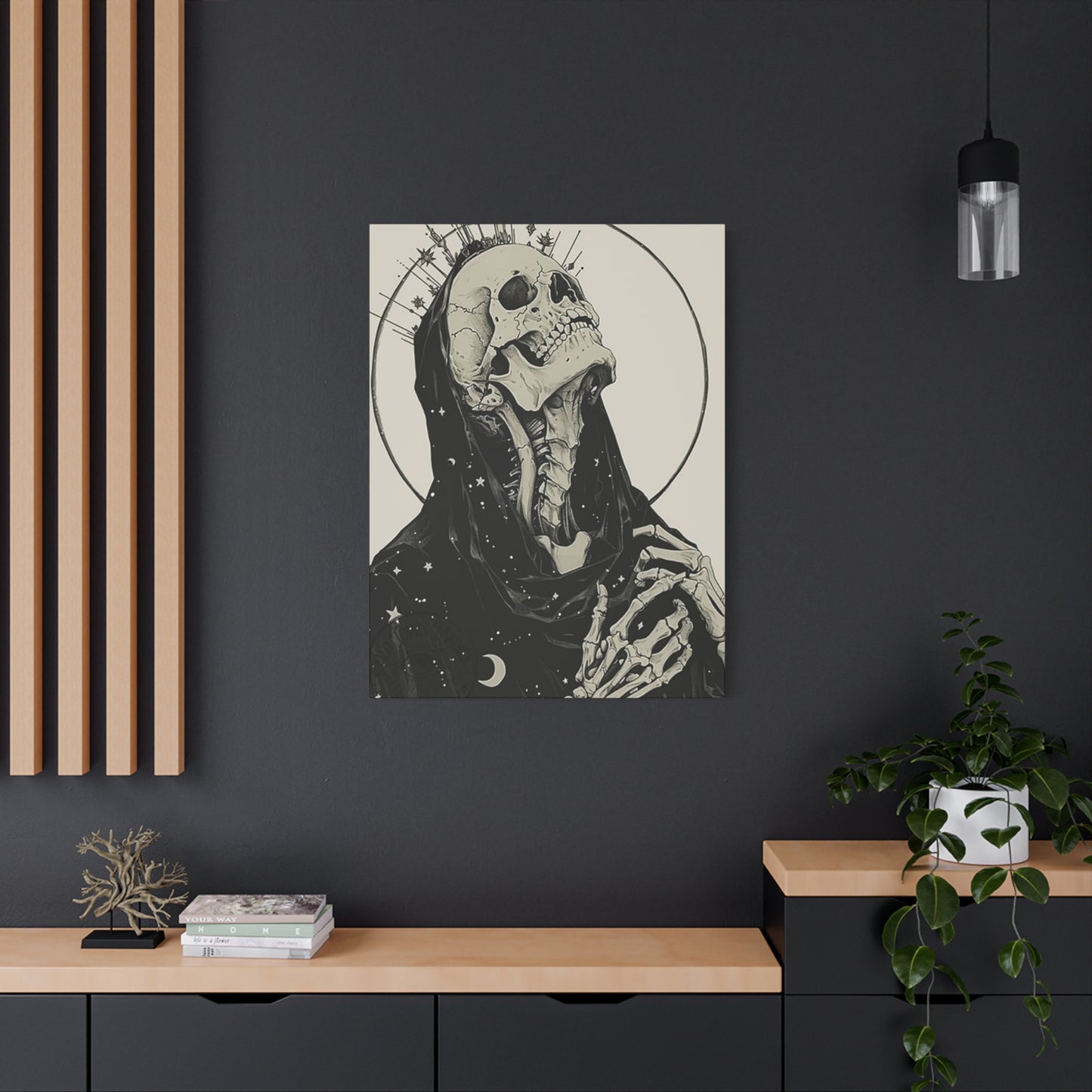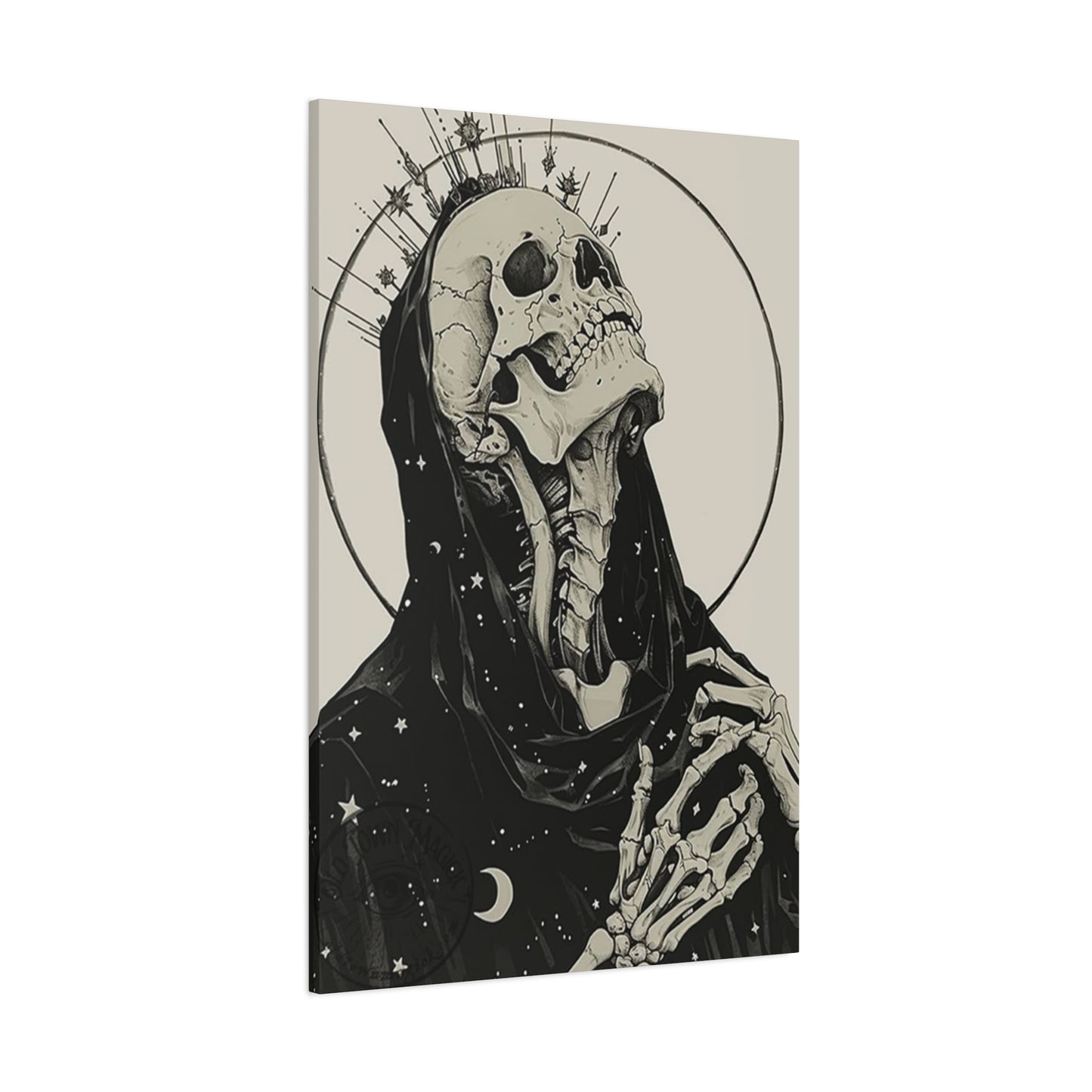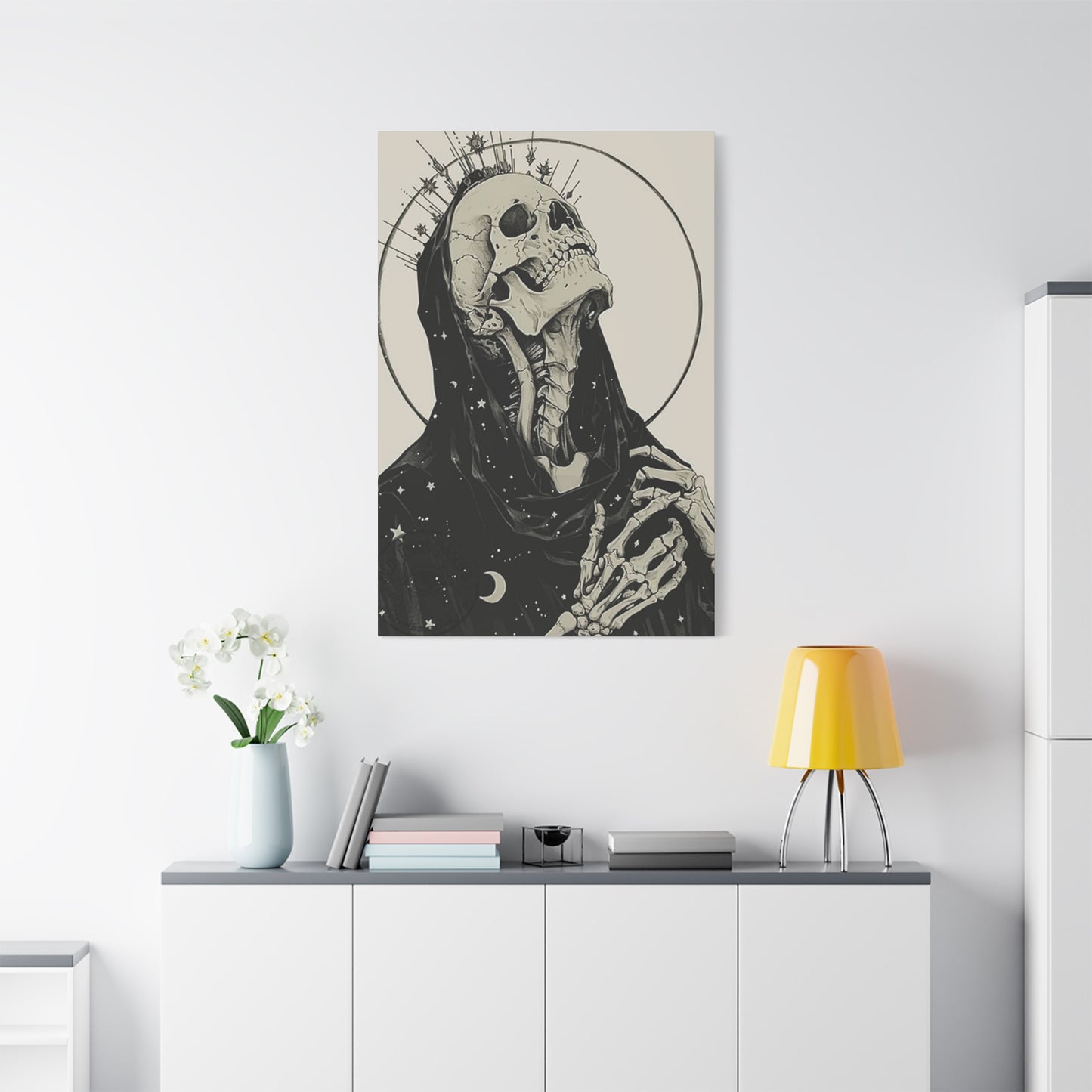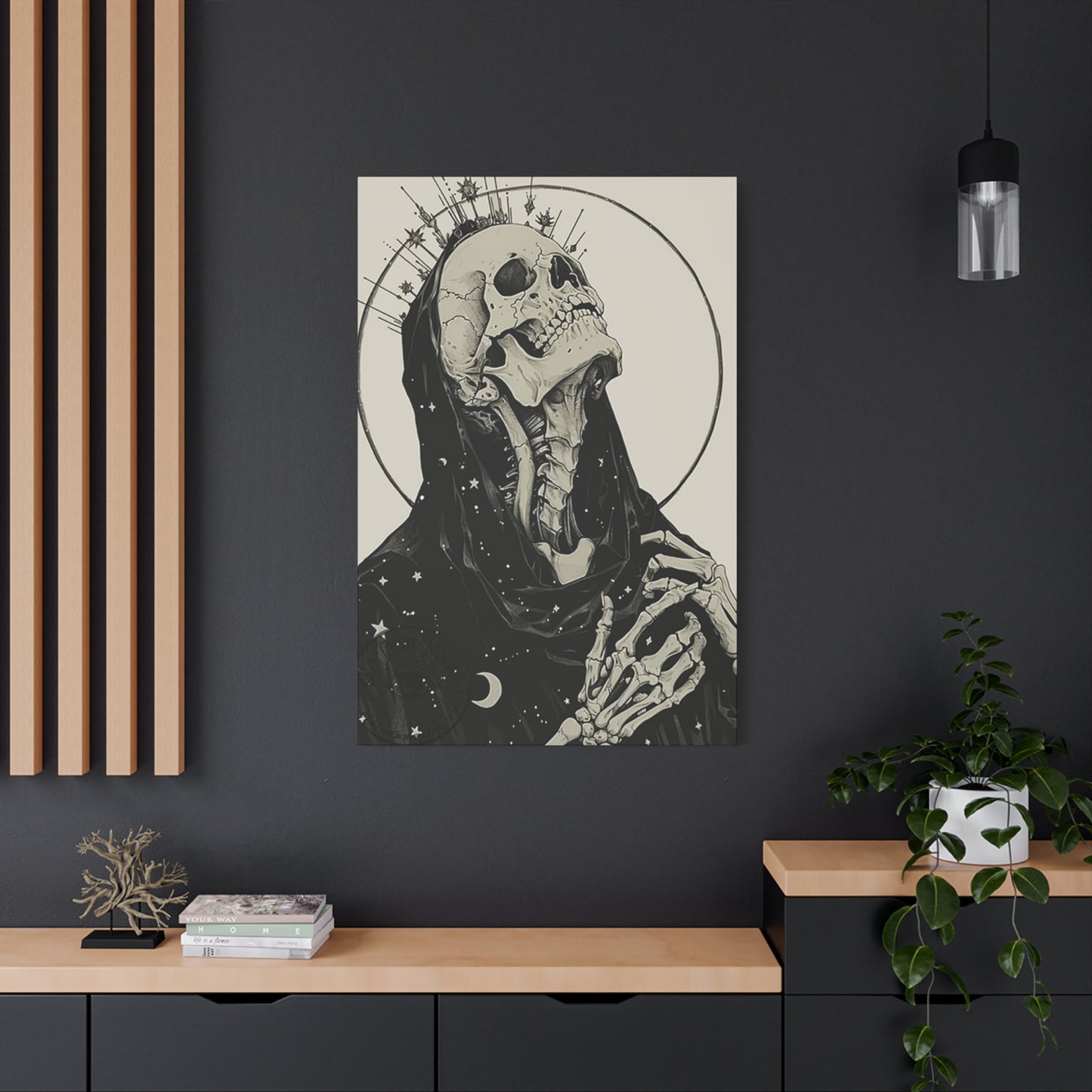Skeleton cloth Wall Art Revolution: Gothic Décor Trends and Creative Display Ideas
The world of home decoration has embraced darker aesthetics with unprecedented enthusiasm, and skeleton wall art has emerged as a powerful force in contemporary décor trends. This fascinating artistic movement combines macabre beauty with sophisticated design elements, creating environments that challenge conventional decoration norms while expressing individual personality and style preferences.
Modern homeowners increasingly seek unique ways to personalize their living environments, moving beyond traditional floral prints and landscape paintings toward more provocative and conversation-starting artwork. Skeleton wall art represents this shift perfectly, offering both visual impact and symbolic depth that resonates with diverse audiences seeking authentic self-expression through their décor choices.
The appeal of skeleton wall art extends far beyond simple shock value or seasonal Halloween decoration. These pieces serve as powerful artistic statements that explore themes of mortality, rebellion, beauty in darkness, and the intersection between life and death. Contemporary artists have elevated skeleton imagery from basic anatomical drawings to sophisticated art forms that incorporate various materials, techniques, and stylistic approaches.
Skeleton Cloth Posters: Dark Wall Vibes
Skeleton cloth posters have revolutionized the way people approach dark décor themes, offering an accessible entry point into gothic aesthetics without requiring major renovation projects or expensive art investments. These textile-based artworks combine the visual impact of traditional posters with the tactile appeal and durability of fabric materials, creating unique decorative elements that transform ordinary rooms into captivating environments.
The cloth medium provides numerous advantages over paper-based posters, including enhanced durability, resistance to humidity and temperature changes, and the ability to hang without frames while maintaining professional appearance. Skeleton cloth posters often feature intricate designs that showcase anatomical accuracy alongside artistic interpretation, creating pieces that serve both educational and decorative purposes.
Many skeleton cloth posters incorporate mixed media elements, combining printed designs with embroidered details, metallic accents, or textured surfaces that add dimensional interest to flat wall surfaces. These enhanced features make the artwork more engaging and create dynamic visual effects under different lighting conditions throughout the day.
The dark wall vibes created by skeleton cloth posters extend beyond simple color schemes to encompass entire atmospheric transformations. These pieces work particularly well in rooms with controlled lighting, where shadows and highlights can interact with the artwork to create constantly changing visual experiences that keep inhabitants and guests engaged with the environment.
Quality skeleton cloth posters often feature fade-resistant inks and materials designed to maintain their visual impact over years of display. This longevity makes them practical investments for homeowners who appreciate dark aesthetic themes but want artwork that will remain vibrant and engaging throughout extended display periods.
The versatility of cloth material allows for creative display options that go beyond traditional poster mounting methods. Skeleton cloth posters can be draped, stretched over frames, layered with other textiles, or even incorporated into furniture covers and room dividers for comprehensive thematic decoration approaches.
Gothic Style with Skeleton Cloth Art
Gothic style decoration has experienced significant revival in recent years, with skeleton cloth art serving as a cornerstone element in authentic gothic home environments. This artistic approach draws inspiration from medieval architecture, Victorian mourning culture, and contemporary dark romanticism to create sophisticated environments that celebrate beauty in darkness and mystery.
Authentic gothic styling requires careful balance between dramatic elements and livable functionality, and skeleton cloth art provides the perfect medium for achieving this balance. These pieces offer sufficient visual impact to establish gothic atmosphere while maintaining subtlety that prevents overwhelming smaller rooms or creating environments that feel oppressive rather than inviting.
The textile nature of skeleton cloth art complements other gothic décor elements particularly well, including heavy drapery, ornate metalwork, candlelit environments, and rich color palettes dominated by deep purples, burgundies, and blacks. This compatibility allows for cohesive design schemes that feel intentional rather than randomly assembled from disparate dark elements.
Modern gothic styling often incorporates contemporary comfort features alongside traditional aesthetic elements, and skeleton cloth art bridges this gap perfectly by providing historical visual references within contemporary material formats. This combination allows homeowners to enjoy gothic atmosphere without sacrificing modern convenience or maintenance requirements.
The symbolism inherent in skeleton imagery aligns perfectly with gothic themes of mortality, spirituality, and the sublime beauty found in life's darker aspects. When incorporated thoughtfully into gothic décor schemes, skeleton cloth art enhances these thematic elements while providing focal points that draw attention and encourage contemplation.
Gothic environments benefit from layered lighting approaches, and skeleton cloth art responds beautifully to various lighting techniques. Candlelight creates flickering shadows that animate skeleton imagery, while strategic spotlighting can highlight specific artistic details and create dramatic focal points within larger room compositions.
Where to Hang Skeleton Cloth Posters
Strategic placement of skeleton cloth posters significantly impacts their visual effectiveness and the overall atmosphere they create within living environments. Different rooms offer unique opportunities for skeleton art display, each with specific considerations regarding lighting, traffic flow, and functional requirements that influence optimal positioning decisions.
Bedrooms provide intimate environments where skeleton cloth posters can create personal sanctuaries that reflect individual taste and personality. These private areas allow for more dramatic or provocative artwork choices that might feel overwhelming in public areas of the home, making them ideal locations for larger or more detailed skeleton art pieces.
Living rooms and common areas benefit from skeleton cloth posters positioned as conversation pieces that establish room themes without dominating seating areas or interfering with television viewing and social interactions. Strategic placement near seating areas encourages closer examination while maintaining comfortable distance for casual appreciation.
Hallways and stairwells offer excellent opportunities for skeleton cloth poster display, creating gallery-like experiences that transform transitional areas into destinations worth exploring. These locations work particularly well for series of related pieces that tell visual stories or showcase different artistic approaches to skeleton themes.
Home offices and creative work areas provide ideal environments for inspirational skeleton cloth art that stimulates creativity and supports alternative thinking approaches. The symbolism of transformation and change inherent in skeleton imagery can provide daily reminders of creative potential and artistic evolution.
Dining rooms can accommodate skeleton cloth posters that enhance intimate dining experiences while providing interesting focal points for dinner conversation. However, placement should consider appetite impact and guest comfort levels with darker thematic elements during meal times.
Bathrooms and powder rooms offer surprising opportunities for smaller skeleton cloth pieces that create memorable impressions for guests while expressing homeowner personality in unexpected locations. The private nature of these areas allows for more experimental or edgy artwork choices.
Skeleton Cloth Art for Edgy Rooms
Edgy room design embraces unconventional aesthetic choices that challenge traditional decoration norms and express bold personality traits through environmental design. Skeleton cloth art serves as an ideal medium for achieving edgy aesthetics while maintaining sophistication and avoiding juvenile or shocking-for-shock's-sake decoration approaches.
Creating edgy environments requires careful balance between provocative elements and functional livability, ensuring that bold aesthetic choices enhance rather than hinder daily life activities. Skeleton cloth art provides this balance by offering strong visual impact that doesn't interfere with furniture placement, lighting needs, or room functionality.
Color coordination plays crucial roles in successful edgy room design, and skeleton cloth art offers numerous palette options that work with both monochromatic and contrasting color schemes. Black and white pieces provide classic gothic appeal, while colored versions can incorporate burgundy, deep purple, electric blue, or metallic accents for more contemporary edge.
Texture contrast enhances edgy aesthetics by creating visual and tactile interest that prevents rooms from feeling flat or one-dimensional. Skeleton cloth art contributes textile texture that complements leather furniture, metal fixtures, rough stone surfaces, and other materials commonly used in edgy décor approaches.
Lighting design becomes particularly important in edgy rooms featuring skeleton cloth art, as dramatic illumination enhances the atmospheric effects that make these environments compelling. Strategic use of colored lighting, directional spotlights, and shadow play can transform simple skeleton artwork into dynamic environmental elements.
The rebellious nature of skeleton imagery appeals to individuals who want their living environments to reflect non-conformist attitudes and alternative lifestyle choices. This symbolic resonance makes skeleton cloth art particularly effective in edgy rooms designed to challenge conventional decoration expectations.
Cool Skeleton Cloth Poster Designs
Contemporary skeleton cloth poster designs encompass diverse artistic styles that range from anatomically accurate scientific illustrations to abstract interpretations that barely suggest skeletal forms. This variety ensures that skeleton art can complement different décor themes while maintaining thematic consistency with darker aesthetic preferences.
Anatomical accuracy represents one popular design approach that combines educational value with decorative appeal, featuring detailed bone structures that showcase artistic skill while providing scientifically accurate representations of human skeletal systems. These pieces work particularly well in study areas, home offices, and rooms where intellectual curiosity is encouraged.
Abstract skeleton designs offer artistic interpretation that suggests skeletal forms without literal representation, creating pieces that work well in contemporary environments where subtle thematic references are preferred over obvious symbolic statements. These designs often incorporate geometric elements, color gradients, and stylized forms that complement modern décor approaches.
Mixed media skeleton cloth posters combine printed designs with additional materials like metallic threads, beading, embroidered details, or painted accents that create dimensional interest and tactile appeal. These enhanced pieces often command attention as artistic focal points while providing sophisticated decoration elements.
Cultural fusion designs incorporate skeleton imagery from various traditions, including Mexican Día de los Muertos aesthetics, Celtic symbolism, or Asian artistic approaches that bring diverse cultural perspectives to skeleton art themes. These pieces offer educational value while celebrating artistic traditions from around the world.
Minimalist skeleton designs focus on essential forms and negative while eliminating unnecessary details, creating clean artistic statements that work well in contemporary environments where simplicity and impact are valued over ornate decoration. These pieces often rely on strong silhouettes and strategic use of contrast for visual effectiveness.
Fantasy-inspired skeleton designs incorporate mythological elements, supernatural themes, or science fiction aesthetics that transform basic skeleton imagery into imaginative artistic statements. These pieces appeal to individuals interested in alternative reality themes and creative escapism through environmental design.
Skeleton Cloth Posters for Halloween
Halloween decoration represents the most obvious application for skeleton cloth posters, but effective seasonal use requires thoughtful integration that goes beyond simple hanging and removal. Successful Halloween decoration creates immersive experiences that transform living environments into themed entertainment venues while maintaining homeowner comfort and safety.
Year-round skeleton cloth art can transition into Halloween decoration through strategic supplementation with seasonal elements like colored lighting, additional props, temporary decorative accents, or themed groupings that enhance spooky atmosphere without requiring complete redecoration approaches.
Creating haunted atmosphere requires attention to environmental details that extend beyond individual artwork pieces to encompass lighting, sound, texture, and flow patterns that guide visitors through themed experiences. Skeleton cloth posters serve as anchor elements that establish thematic consistency while other decorative elements provide atmospheric enhancement.
Family-friendly Halloween decoration using skeleton cloth art requires careful selection of designs that provide appropriate spookiness without traumatizing young children or making family environments uncomfortable for extended periods. Artistic rather than gore-focused designs often work better for household Halloween decoration.
Outdoor Halloween display opportunities exist for weather-resistant skeleton cloth posters that can withstand autumn weather conditions while maintaining visual impact for trick-or-treaters and neighborhood visitors. Strategic lighting becomes particularly important for outdoor skeleton art visibility and safety.
Party planning applications for skeleton cloth posters include temporary display options that transform ordinary rooms into Halloween party venues. Removable mounting methods, strategic lighting changes, and coordinated décor elements can create dramatic atmospheric transformations for special events.
Post-Halloween integration allows homeowners to maintain skeleton cloth art beyond seasonal decoration periods by incorporating pieces into year-round gothic or alternative décor themes. This approach maximizes decoration investments while providing ongoing environmental enhancement.
Affordable Skeleton Cloth Wall Art
Budget-conscious homeowners can access skeleton wall art through various affordable options that provide visual impact without requiring significant financial investment. Cost-effective approaches include print-on-demand services, DIY creation methods, thrift store discoveries, and strategic purchasing timing that maximizes decoration budgets.
Print-on-demand services offer custom skeleton cloth art creation at reasonable prices, allowing homeowners to specify size, design, material, and finishing options while avoiding minimum order quantities required by traditional printing services. These services often provide design templates or custom design services for additional fees.
DIY skeleton cloth art creation provides maximum cost control while allowing complete creative freedom over design choices, materials, and finishing techniques. Basic materials including fabric, fabric paint, stencils, and mounting hardware remain affordable while providing foundations for unlimited creative exploration.
Thrift stores and secondhand markets occasionally yield skeleton art discoveries at fraction of retail prices, though availability varies by location and timing. Regular browsing of these venues can result in unique finds that provide character and history alongside affordability.
Clearance sales and end-of-season promotions offer opportunities to acquire quality skeleton cloth art at reduced prices, particularly after Halloween when many retailers discount seasonal merchandise. Strategic shopping during these periods can yield significant savings on decoration budgets.
Budget allocation strategies should consider long-term display intentions when evaluating skeleton cloth art investments. Higher-quality pieces that provide years of satisfaction may justify higher initial costs compared to frequent replacement of cheaper alternatives.
Cost comparison between skeleton cloth art and alternative decoration options often favors textile-based pieces due to durability, maintenance requirements, and versatility factors that provide ongoing value beyond initial purchase prices.
Care Tips for Skeleton Cloth Posters
Proper maintenance extends the lifespan and visual appeal of skeleton cloth posters while protecting decoration investments through preventive care approaches. Different fabric materials require specific care techniques, but general principles apply across most skeleton cloth art pieces.
Dust prevention represents the most important ongoing maintenance task, as accumulated dust dulls colors and creates dingy appearance that diminishes artistic impact. Regular gentle vacuuming with brush attachments or light dusting with microfiber cloths prevents buildup that becomes difficult to remove over time.
Sunlight exposure poses significant risks to skeleton cloth art through fading, color shifts, and material degradation that can permanently damage artwork appearance. Strategic placement away from direct sunlight or use of UV-filtering window treatments protects fabric-based art from solar damage.
Humidity control helps prevent mold, mildew, and material degradation that can destroy skeleton cloth posters in damp environments. Proper ventilation, climate control, and moisture monitoring protect textile art from humidity-related damage while maintaining color vibrancy.
Cleaning methods vary by fabric type and printing techniques used in skeleton cloth poster creation. Gentle hand washing, spot cleaning, or professional cleaning services may be appropriate depending on material specifications and soil levels. Always test cleaning methods on inconspicuous areas before treating entire pieces.
Storage procedures become important for seasonal skeleton cloth art or pieces requiring temporary removal. Proper folding, rolling, or flat storage techniques prevent creasing, color transfer, or material damage during storage periods. Acid-free storage materials provide additional protection for long-term storage.
Inspection schedules help identify developing problems before they become irreversible, allowing timely intervention to preserve skeleton cloth art appearance and integrity. Regular examination of mounting points, fabric condition, and color stability enables proactive maintenance approaches.
Skeleton Posters in Pop Culture
Popular culture has embraced skeleton imagery across diverse media formats, influencing contemporary decoration trends and creating shared cultural references that enhance skeleton poster appeal. Understanding these cultural connections provides context for skeleton art appreciation while highlighting its relevance in modern aesthetic movements.
Music industry connections include album covers, band merchandise, concert visuals, and music video imagery that feature skeleton themes across genres from heavy metal to indie rock. These associations create cultural cachet for skeleton art among music enthusiasts who want to express musical tastes through environmental design.
Film and television representations of skeleton imagery span horror movies, animated features, comedy productions, and dramatic works that use skeletal symbolism for various narrative purposes. These media appearances normalize skeleton imagery while associating it with entertainment and artistic expression rather than purely morbid themes.
Fashion industry adoption of skeleton motifs appears in clothing design, accessory creation, and runway presentations that elevate skeleton imagery from subcultural symbols to mainstream fashion statements. This acceptance translates into home décor through coordinated aesthetic approaches that bridge personal style and environmental design.
Gaming culture incorporates skeleton imagery extensively across video game genres, creating shared visual vocabulary among gaming enthusiasts who recognize skeleton art as part of entertainment culture rather than purely gothic or macabre decoration. This association expands skeleton poster appeal among younger demographics.
Social media influence on skeleton art appreciation occurs through platform sharing, influencer endorsements, and viral content that showcases creative skeleton poster displays. These digital connections create communities of skeleton art enthusiasts who share ideas and inspiration for creative environmental applications.
Art movement connections link skeleton imagery to larger cultural themes including memento mori traditions, vanitas paintings, and contemporary art movements that explore mortality themes. These connections provide intellectual framework for skeleton poster appreciation that extends beyond simple decoration into cultural engagement.
DIY Skeleton Cloth Poster Ideas
Creative individuals can produce personalized skeleton cloth art through DIY approaches that combine artistic expression with budget consciousness while ensuring perfect fit with existing décor themes and personal aesthetic preferences. Various techniques accommodate different skill levels and available resources.
Fabric painting represents the most accessible DIY approach, requiring basic materials including fabric paint, brushes, stencils, and plain cloth backing. This method allows complete creative control over design elements while providing hands-on artistic experience that personalizes final results.
Stenciling techniques enable consistent reproduction of complex skeleton designs without requiring advanced artistic skills, using pre-made or custom-created stencils with fabric paint or spray applications. Multiple stencil layers can create detailed, multi-colored skeleton designs with professional appearance.
Transfer methods include iron-on transfers, heat vinyl applications, and printable fabric transfer sheets that allow computer-generated skeleton designs to be applied to cloth backing materials. These approaches combine digital design flexibility with fabric art creation.
Mixed media incorporation adds dimensional interest to DIY skeleton cloth posters through addition of beading, embroidery, metallic accents, or other materials that create texture and visual complexity. These enhanced techniques require more time and skill but produce unique artistic results.
Collage approaches combine multiple fabric pieces, printed materials, and decorative elements into complex skeleton-themed compositions that showcase creativity while recycling materials and reducing project costs. These techniques work well for large-scale skeleton art projects.
Collaborative projects enable family or group creation of skeleton cloth art, distributing work tasks while creating shared creative experiences. These approaches work particularly well for seasonal decorations or special event preparations where multiple participants contribute to final results.
Skeleton Cloth Posters in Modern Décor
Contemporary home design increasingly embraces alternative aesthetic elements that challenge traditional decoration norms, and skeleton cloth posters have found acceptance within modern décor frameworks through sophisticated integration approaches that balance edge with elegance.
Minimalist modern environments benefit from carefully selected skeleton cloth art that provides focal point interest without overwhelming clean design lines or cluttering visual composition. Simple skeleton designs with strong contrast work particularly well in minimalist contexts where every decorative element must justify its presence.
Industrial design themes complement skeleton cloth art through shared emphasis on raw materials, functional aesthetics, and unconventional beauty that challenges traditional decoration expectations. The combination of exposed structural elements with skeleton imagery creates cohesive environments that celebrate alternative beauty concepts.
Contemporary color palettes often incorporate skeleton cloth art through monochromatic schemes that emphasize contrast and form rather than color complexity. Black, white, and gray skeleton pieces integrate seamlessly into modern environments while providing visual interest through graphic impact.
Scandinavian design influences can accommodate skeleton cloth art through emphasis on simplicity, functionality, and personal expression that allows individual taste to manifest within clean aesthetic frameworks. Subtle skeleton pieces work particularly well in Scandinavian-inspired environments.
Eclectic modern styling embraces skeleton cloth art as part of curated collections that combine diverse artistic elements into cohesive personal expression. This approach allows skeleton art to coexist with other décor themes while contributing to overall environmental personality.
Smart home integration opportunities exist for skeleton cloth art through programmable lighting systems, automated display rotation, or interactive elements that respond to environmental conditions or user preferences. These technological integrations represent emerging trends in personalized home decoration.
Symbolism in Skeleton Cloth Art
Skeleton imagery carries profound symbolic meaning across cultures and historical periods, making skeleton cloth art rich sources of philosophical contemplation and personal reflection that extend beyond simple decoration into deeper engagement with life themes and mortality awareness.
Memento mori traditions dating back centuries use skeleton imagery to remind viewers of mortality and encourage appreciation of present moments while maintaining perspective on life's temporary nature. This philosophical framework adds intellectual depth to skeleton cloth art display and appreciation.
Transformation symbolism inherent in skeleton imagery represents change, renewal, and the cyclical nature of existence that resonates with individuals experiencing life transitions or seeking reminders of personal growth potential. This symbolic richness makes skeleton art meaningful beyond aesthetic considerations.
Cultural variations in skeleton symbolism include Mexican Día de los Muertos celebrations that honor deceased relatives, Celtic traditions that view death as transition rather than ending, and Eastern philosophies that integrate mortality awareness into daily spiritual practice. These diverse perspectives enrich skeleton art appreciation.
Rebellious symbolism associated with skeleton imagery appeals to individuals who challenge conventional social expectations or seek to express non-conformist attitudes through environmental choices. This symbolic resonance makes skeleton cloth art particularly meaningful for alternative lifestyle adherents.
Scientific symbolism connects skeleton imagery to medical knowledge, anatomical study, and rational understanding of human biology that appeals to intellectually curious individuals who appreciate educational content alongside decorative appeal. This dual function enhances skeleton art value and significance.
Personal symbolism allows individual interpretation of skeleton imagery based on personal experiences, beliefs, and associations that make skeleton cloth art meaningful in ways unique to each viewer. This interpretive flexibility ensures ongoing engagement and appreciation that evolves over time.
Pairing Skeleton Posters with Dark Walls
Dark wall colors provide dramatic backdrops for skeleton cloth art that enhance visual impact while creating sophisticated environments that celebrate bold aesthetic choices. Strategic color coordination and lighting become crucial for successful integration that maximizes artistic effectiveness.
Color theory principles guide effective skeleton art and dark wall combinations, considering contrast requirements, undertone compatibility, and mood enhancement factors that create harmonious environments. Understanding these principles helps achieve professional-quality results that feel intentional rather than accidental.
Black walls provide maximum contrast for white or light-colored skeleton designs while creating dramatic environments that emphasize artistic details and enhance gothic atmosphere. However, lighting becomes critical to prevent overwhelming darkness that makes art difficult to appreciate.
Deep purple walls complement skeleton cloth art with sophisticated color depth that provides visual interest without competing with artwork for attention. This combination works particularly well with metallic skeleton accents or designs incorporating purple elements.
Charcoal gray walls offer neutral backgrounds that allow skeleton art colors to dominate while providing subtle contrast that enhances rather than overwhelms artistic elements. This approach works well in contemporary environments where balance is prioritized over dramatic contrast.
Rich burgundy walls create warm dark environments that complement skeleton art while providing color interest that prevents monotonous appearance. This combination works particularly well with antique or vintage-inspired skeleton designs.
Lighting strategies become essential for dark wall and skeleton art combinations, requiring strategic illumination that highlights artwork while preventing oppressive darkness. Track lighting, picture lights, and accent illumination create layers that enhance both wall color and artistic elements.
Skeleton Cloth Poster Trends 2025
Emerging trends in skeleton cloth art reflect broader cultural shifts toward personalization, sustainability, and technological integration that influence contemporary decoration preferences and purchasing decisions. Understanding these trends helps consumers make informed choices that align with current aesthetic movements.
Sustainability consciousness drives demand for environmentally responsible skeleton cloth art production using eco-friendly materials, ethical manufacturing processes, and durable construction that reduces replacement frequency. Consumers increasingly consider environmental impact alongside aesthetic appeal when making decoration decisions.
Customization options expand through digital printing technology that enables personalized skeleton cloth art creation at reasonable costs, allowing consumers to specify design elements, colors, sizes, and materials that perfectly match individual preferences and environmental requirements.
Technology integration includes smart home compatibility features like programmable lighting, automated display rotation, or interactive elements that respond to environmental conditions or user preferences. These innovations represent emerging frontiers in personalized home decoration that combine traditional art with contemporary convenience.
Cultural fusion approaches combine skeleton imagery from diverse traditions, creating pieces that celebrate global artistic heritage while providing educational value and cultural awareness. These designs appeal to consumers interested in learning about different cultural perspectives through environmental decoration.
Minimalist aesthetics influence skeleton cloth art design toward simplified forms, reduced color palettes, and clean compositions that integrate with contemporary home design trends emphasizing functionality and visual clarity over ornate decoration.
Artisanal production values drive interest in handcrafted skeleton cloth art that showcases individual artistic skill and provides unique pieces unavailable through mass production. This trend supports independent artists while providing consumers with distinctive decoration options.
Skeleton Art for Teen Bedrooms
Teenage bedroom decoration requires balancing emerging adult tastes with parental comfort levels and practical considerations including study needs, sleep quality, and social acceptance factors that influence skeleton art selection and placement decisions.
Age-appropriate skeleton designs focus on artistic rather than graphic elements, emphasizing scientific accuracy, cultural symbolism, or abstract interpretation over potentially disturbing imagery that might interfere with sleep or emotional wellbeing. These approaches provide edgy appeal without crossing inappropriate boundaries.
Personal expression opportunities through skeleton cloth art allow teenagers to communicate individual identity, interests, and aesthetic preferences while developing personal taste and decoration skills that will benefit future independent living situations.
Budget considerations reflect typical teenage financial constraints while parents evaluate decoration investments that balance current satisfaction with changing tastes that may evolve rapidly during adolescent development. Affordable options provide flexibility for preference evolution.
Social acceptance factors influence skeleton art choices based on peer reactions, parental approval, and broader family comfort levels with alternative decoration themes. Successful teenage skeleton art integration requires negotiation and compromise among various stakeholders.
Study environment impacts require consideration of whether skeleton cloth art enhances or distracts from academic focus, with placement decisions that support rather than hinder educational activities. Some teenagers find alternative decoration motivating while others prefer neutral study environments.
Future flexibility becomes important for skeleton cloth art investments that may need modification or removal as teenagers mature and develop evolving aesthetic preferences. Removable mounting methods and transitional design choices provide adaptability for changing tastes.
Unique Skeleton Cloth Poster Prints
Distinctive skeleton cloth art stands apart from mass-produced decoration through unique design elements, specialized printing techniques, or limited edition availability that provides exclusivity and artistic value beyond simple wall covering functionality.
Artist collaboration projects connect established visual artists with textile producers to create limited edition skeleton cloth prints that combine artistic reputation with practical decoration applications. These partnerships often produce museum-quality pieces at accessible price points.
Cultural authenticity in skeleton prints requires research and respect for traditional imagery sources, ensuring that cultural elements are represented accurately and appropriately rather than superficially appropriated. This attention to detail creates educational value alongside decorative appeal.
Technical innovation in printing methods enables skeleton cloth art creation using techniques like sublimation printing, hand-screening, digital fabric printing, or mixed media applications that produce unique visual effects unavailable through standard production methods.
Limited edition releases create collectible value for skeleton cloth art enthusiasts while providing exclusivity that enhances personal satisfaction with decoration choices. These releases often feature artist signatures, numbered printing, or special edition packaging that adds value.
Custom commission opportunities allow consumers to work directly with artists to create personalized skeleton cloth art that reflects individual specifications, preferred symbolism, or environmental integration requirements that mass-produced pieces cannot address.
Quality material selection distinguishes premium skeleton cloth art through superior fabric choices, fade-resistant inks, reinforced construction, and finishing details that justify higher prices through enhanced durability and appearance quality.
History of Skeleton Images in Art
Skeleton representation in artistic expression spans millennia across diverse cultures, providing historical context that enriches contemporary skeleton cloth art appreciation while connecting modern decoration choices to broader artistic traditions and cultural meanings.
Ancient civilizations incorporated skeleton imagery into religious art, funerary decoration, and cultural ceremonies that honored deceased individuals while contemplating mortality themes. Egyptian, Greek, and Roman examples demonstrate early artistic engagement with skeletal symbolism.
Medieval period skeleton art appears in religious contexts including manuscripts, church decoration, and morality plays that used death imagery to encourage spiritual reflection and appropriate life choices. These works established skeleton symbolism in Western artistic tradition.
Renaissance anatomical studies elevated skeleton imagery from purely symbolic representation to scientific accuracy through artists like Leonardo da Vinci who combined artistic skill with medical knowledge to create detailed skeletal drawings that influenced both art and science.
Baroque vanitas paintings featured skeleton imagery alongside other symbols of mortality and temporal existence, creating complex allegorical works that combined artistic beauty with philosophical contemplation about life meaning and material attachment.
Victorian mourning culture embraced skeleton imagery in jewelry, home decoration, and commemorative art that honored deceased family members while processing grief through artistic expression. This period normalized skeleton imagery in domestic environments.
Contemporary art movements continue skeleton imagery exploration through diverse media and cultural perspectives that challenge traditional symbolism while creating new interpretive frameworks for understanding death, transformation, and human existence themes.
Skeleton Posters as Statement Pieces
Strategic use of skeleton cloth art as focal point elements requires careful consideration of placement, size, design, and environmental integration that maximizes artistic impact while creating memorable impressions that reflect homeowner personality and aesthetic sophistication.
Scale considerations determine whether skeleton posters function effectively as statement pieces, with larger formats generally providing greater visual impact while smaller pieces require strategic grouping or strategic placement to achieve focal point status within room compositions.
Strategic placement of statement skeleton art considers traffic flow, viewing angles, lighting conditions, and competition from other decorative elements to ensure maximum visibility and impact. Prime locations include areas where viewers naturally focus attention during room entry or seating.
Design complexity affects statement piece effectiveness, with detailed or intricate skeleton designs generally providing greater visual engagement than simple compositions, though strategic use of contrast or unusual materials can make simple designs equally impactful.
Lighting design becomes crucial for statement piece skeleton art, requiring illumination strategies that highlight artistic details while creating dramatic effects that enhance rather than overwhelm the artwork. Professional lighting consultation may justify investment for premium statement pieces.
Coordination challenges arise when integrating statement skeleton art with existing décor elements, requiring careful color, texture, and style coordination that supports rather than conflicts with the focal artwork. This may require surrounding décor modification to achieve optimal integration.
Investment justification for statement piece skeleton art considers longevity, quality, uniqueness, and personal satisfaction factors that determine whether higher costs are justified by enhanced environmental satisfaction and long-term decoration success.
Conclusion
The remarkable evolution of skeleton wall art from niche gothic decoration to mainstream design element reflects broader cultural shifts toward authentic self-expression and alternative aesthetics in contemporary home environments. This comprehensive exploration has revealed the multifaceted nature of skeleton cloth art, demonstrating its versatility, symbolism, and practical applications across diverse décor themes and personal preferences.
Skeleton cloth posters have emerged as particularly significant contributors to this artistic movement, offering accessibility, durability, and creative flexibility that traditional art forms cannot match. The textile medium provides unique advantages including weather resistance, mounting versatility, and maintenance simplicity that make skeleton art practical for everyday living while maintaining sophisticated visual impact.
The cultural significance of skeleton imagery extends far beyond simple shock value or seasonal decoration, connecting contemporary home design to rich artistic traditions spanning centuries of human creative expression. From ancient memento mori concepts to modern scientific accuracy, skeleton art carries profound symbolic meaning that enriches living environments while encouraging philosophical contemplation and personal reflection.
Practical considerations including placement strategies, care requirements, budget management, and trend awareness enable successful integration of skeleton wall art into diverse home environments. Whether pursuing authentic gothic styling, edgy contemporary aesthetics, or subtle alternative decoration, skeleton cloth art provides flexible solutions that accommodate various lifestyle needs and aesthetic preferences.
The democratization of skeleton art through affordable production methods, DIY opportunities, and diverse design options ensures that this powerful decorative medium remains accessible to broad audiences rather than exclusive collectors. This accessibility has fueled growing adoption rates and creative innovation that continues expanding skeleton art possibilities.
Future developments in skeleton wall art promise exciting innovations through technological integration, sustainable production methods, and international cultural exchange that will further enrich this dynamic artistic category. Smart home compatibility, environmental consciousness, and global design influences represent emerging trends that will shape skeleton art evolution throughout the coming years.
The enduring appeal of skeleton wall art ultimately derives from its ability to transform ordinary living environments into personalized sanctuaries that reflect individual identity while challenging conventional decoration expectations. This transformative power makes skeleton cloth art valuable investments in personal satisfaction and environmental enhancement that justify both financial commitment and creative exploration.
As home decoration continues evolving toward increased personalization and alternative aesthetics, skeleton wall art stands positioned to maintain its growing influence on contemporary design trends while inspiring new generations of homeowners to embrace bold artistic choices that express authentic personality through environmental design decisions.

















